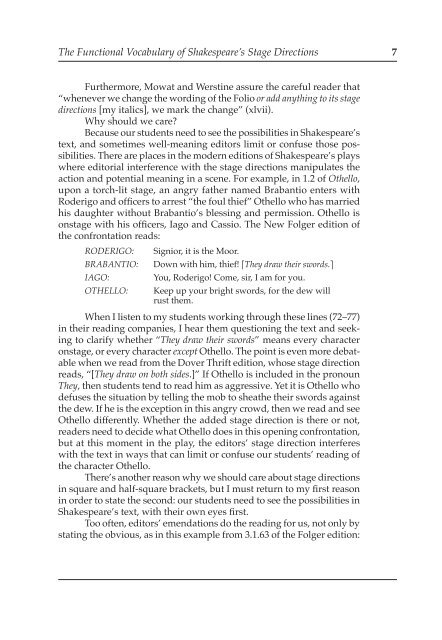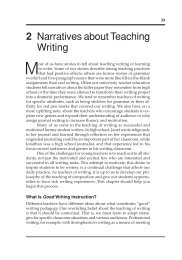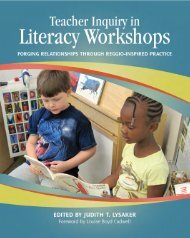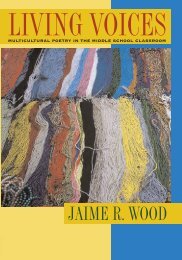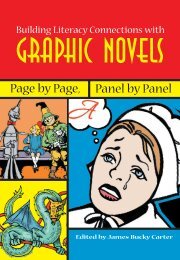reading Shakespeare
reading Shakespeare
reading Shakespeare
You also want an ePaper? Increase the reach of your titles
YUMPU automatically turns print PDFs into web optimized ePapers that Google loves.
The Functional Vocabulary of <strong>Shakespeare</strong>’s Stage Directions 7<br />
Furthermore, Mowat and Werstine assure the careful reader that<br />
“whenever we change the wording of the Folio or add anything to its stage<br />
directions [my italics], we mark the change” (xlvii).<br />
Why should we care<br />
Because our students need to see the possibilities in <strong>Shakespeare</strong>’s<br />
text, and sometimes well-meaning editors limit or confuse those possibilities.<br />
There are places in the modern editions of <strong>Shakespeare</strong>’s plays<br />
where editorial interference with the stage directions manipulates the<br />
action and potential meaning in a scene. For example, in 1.2 of Othello,<br />
upon a torch-lit stage, an angry father named Brabantio enters with<br />
Roderigo and officers to arrest “the foul thief” Othello who has married<br />
his daughter without Brabantio’s blessing and permission. Othello is<br />
onstage with his officers, Iago and Cassio. The New Folger edition of<br />
the confrontation reads:<br />
RODERIGO: Signior, it is the Moor.<br />
BRABANTIO: Down with him, thief! ⎡They draw their swords.⎤<br />
IAGO: You, Roderigo! Come, sir, I am for you.<br />
OTHELLO: Keep up your bright swords, for the dew will<br />
rust them.<br />
When I listen to my students working through these lines (72–77)<br />
in their <strong>reading</strong> companies, I hear them questioning the text and seeking<br />
to clarify whether “They draw their swords” means every character<br />
onstage, or every character except Othello. The point is even more debatable<br />
when we read from the Dover Thrift edition, whose stage direction<br />
reads, “[They draw on both sides.]” If Othello is included in the pronoun<br />
They, then students tend to read him as aggressive. Yet it is Othello who<br />
defuses the situation by telling the mob to sheathe their swords against<br />
the dew. If he is the exception in this angry crowd, then we read and see<br />
Othello differently. Whether the added stage direction is there or not,<br />
readers need to decide what Othello does in this opening confrontation,<br />
but at this moment in the play, the editors’ stage direction interferes<br />
with the text in ways that can limit or confuse our students’ <strong>reading</strong> of<br />
the character Othello.<br />
There’s another reason why we should care about stage directions<br />
in square and half-square brackets, but I must return to my first reason<br />
in order to state the second: our students need to see the possibilities in<br />
<strong>Shakespeare</strong>’s text, with their own eyes first.<br />
Too often, editors’ emendations do the <strong>reading</strong> for us, not only by<br />
stating the obvious, as in this example from 3.1.63 of the Folger edition:


